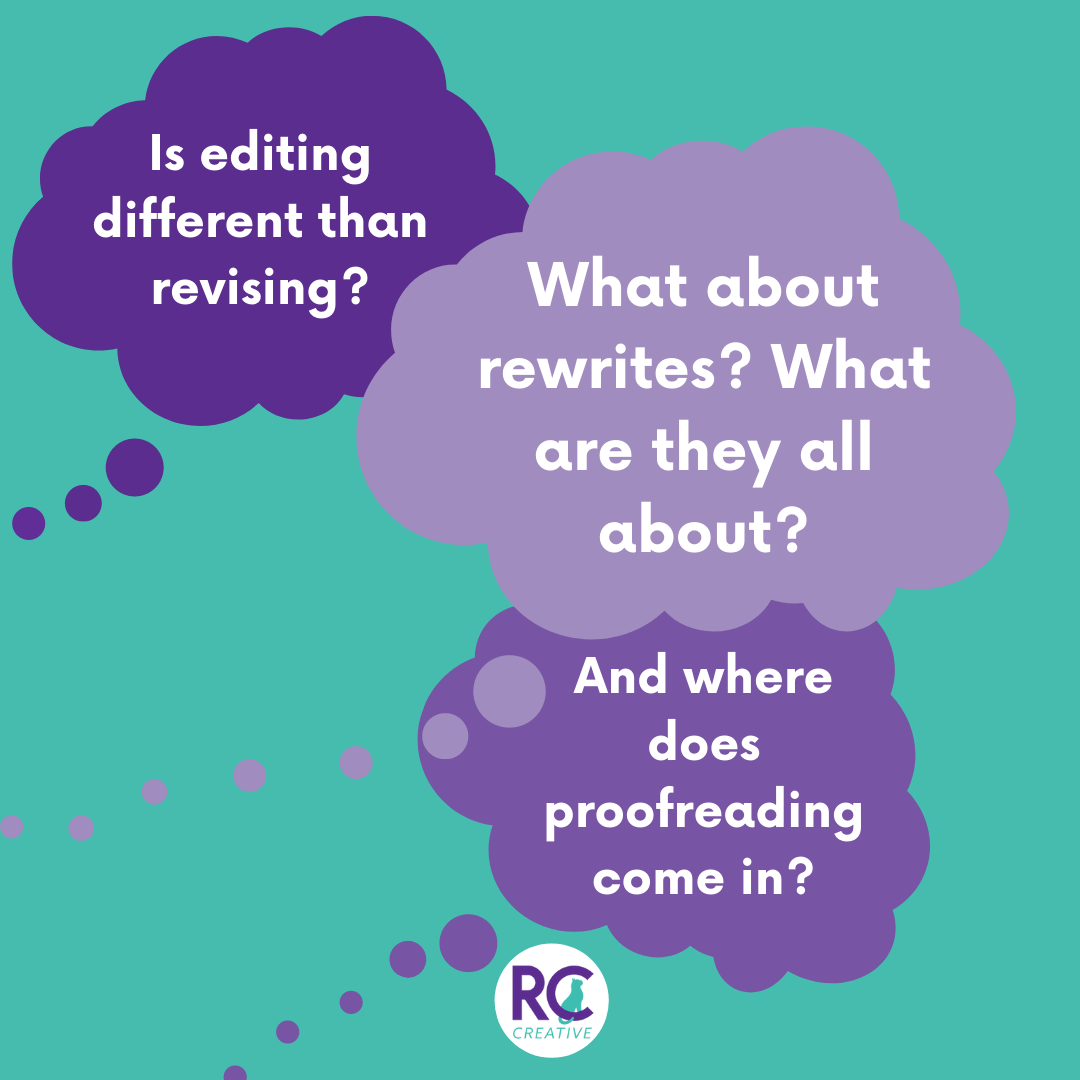What does a copyeditor do?
(And other questions you have no idea how to answer)
You’ve drafted a website, an email sequence, an ebook, article, blog, or some other kind of writing.
Congratulations!
Getting that first draft down “on paper” is the hardest part for most people.
Is it ready to publish?
Yeah, you’re right. Probably not—yet. But hey, that’s cool!
Acknowledging that your work isn’t quite “there” yet is actually an important step.
As business owners, we write blogs, ebooks, emails, and web content so our ideal clients learn to come to us when they need expertise.
But when reading is anything other than effortless, when the thoughts don’t flow or the wording is clunky, or (heaven forbid) you hand them a wall of text . . . readers give up. They leave your page and go back to scrolling through TikTok.
And that affects your SEO and your bottom line.
And if those readers do stick around, but they keep running into misplaced punctuation, inconsistent formatting, or misspellings, readers lose trust.
When readers can’t trust your writing, they won’t look to you as an expert.
If you’re not the expert, someone else is.
So guess where your ideal clients are spending their money, then.
Yeah.
So you’ve got this draft sitting in your documents, and you know it’s time for a professional copyeditor’s eye on it.
You start Googling around.
“Copyediting for mission-driven businesses.”
“Small business copyeditor.”
“How to find a great editor for my business.”
And you find information about editing! Cool!
But wait.
Then there’s a bunch of stuff about revising? And rewrites . . . and then there’s proofreading, too . . . So, like, what does an editor actually do?
Is editing different than revising? What about rewrites? What are they all about? And where does proofreading come in?
This can all feel really overwhelming when you’re starting to research editors. I get that. So first . . . take a breath.
We’re going to go step by step to learn:
The five stages of editing
How to know where your draft is on the editing spectrum
What you can expect from your editor at each stage
Let’s start with what it means to edit a piece of writing.
“Editing” isn’t just one specific thing.
It’s a spectrum.
And that spectrum covers all the changes that can increase clarity, create a natural flow, showcase your “voice,” and generally make your writing enjoyable to read and easy to follow.
When most people talk about “editing,” they’re not talking about any specific spot on this spectrum.
In conversation, it’s normal to use “edit” as a catch-all, a synonym for “change,” “modify,” or “alter.”
That can really muddy negotiations, though (believe me—I’ve been there). After all, you might be wanting edits on the “big picture” side, but the person you’re talking with might think you’re looking for line-by-line edits, on the narrower side. They’re completely different, but they’re both types of edits.
And here’s where it gets really tricky: there’s no one universally-accepted definition for each of those dots on the editing spectrum.
While most editors’ will have generally the same concept of what makes “revisions” and what makes “rewrites,” those descriptions will vary depending on who you talk to.
So I’m going to let you in on the definitions I use to talk about each one of those items: redrafting, rewriting, revising, editing, and proofreading.
What is a redraft?
A redraft is the broadest, biggest picture, most sweeping kind of edit you can make. That’s why it’s step one.
During this stage, we look at the draft from a “10,000-foot view.”
Here’s how you do that:
Read through your draft. Just from the words on the page, what does it sound like the topic or theme of your piece is? Write down your “takeaway.” Is it what you intended your readers to learn from you?
If it is, great! You don’t need to redraft and you can move on to rewrites.
If not, redrafting is your starting point. Redrafting is about tossing out your current draft (ugh! frustrating!) and starting fresh to reshape the substance of your piece so that it does reflect the takeaway you want to communicate.
When you submit your draft to me at the redraft level, you can expect:
Feedback on the effectiveness of the takeaway and concept
Thoughts about the thematic clarity
Suggested changes to implement in the next draft
Sometimes I handle the redrafting itself. Other times, my client tackles the redraft. It’s up to you! We can set up our editing partnership to cater to your specific needs and skills.
If we agree to a fully redrafted piece, I’ll send you a new draft focused on your intended takeaway!
What’s included in rewriting?
Rewrites happen when we’ve looked at a draft and decided that our theme is appropriate and some of the content is helping us get to the right takeaway—but we need to make changes so that our reader can easily absorb the lesson we want to share. We do that by focusing on clarity and structure.
Rewriting is the “ditch-and-replace” level. Remember that during the redrafting stage, the whole draft gets replaced by a freshly written one.
Sometimes, you just need someone to overhaul your draft—hand it over and get it back polished, clear, and beautiful!
At this level, I take your draft apart, clean all the pieces, and put it together again—shiny, new, and ready to make an impact.
During rewrites, some of the content will stay the same. But there might be whole paragraphs, sections, or (if you’re writing a book) chapters that get replaced.
When you submit your draft to me at the rewrite level, you can expect:
A ready-to-publish piece based on your original document
The same substance or theme, but alterations to the specific content
Focus on the crux of the piece, taking the reader from point A to B to C
Clean structure and clarity of thought
What does it mean to “revise” a document?
Here, our focus narrows again—this time to the paragraph level, where we focus on style, voice, and syntax (do the words “sound nice” in the order they’re written?). Some sentences or phrases may be reworded or replaced, but at the revision level the “bigger picture” replacements should already have been completed.
When you submit your draft to me at the revision level, you can expect:
Upgraded style and cohesive voice to draw your readers in and keep them engaged
Clarity of each paragraph
Some sentence-level rewrites
Formatting optimized for the “scanners” who jump from header to header
Compelling content for the “detectives” who dig into the details
SEO-friendly phrasing to help you climb the Google ladder (for web content)
What is editing?
When we get to editing, we zoom in to focus on each sentence individually, and then zoom back out to see how each sentence fits with the one before and after it.
When you submit your draft to me at the line-by-line editing level, you can expect:
Purposeful and clear sentence structure
Flawless syntax and clarity (so your readers never go, “huh?”)
Word choice that enhances your storytelling
Easy-to-read flow to take your readers from A to B to C
What does “proofreading” mean?
Proofreading is a simple idea (that’s hard to do well).
By now, you’ve gone through the four broader forms of editing: redrafting, rewriting, revising, and line-by-line editing. You’ve increased your clarity, smoothed out your flow, improved your style, diversified word choice, optimized your keywords, and all those other elements.
So you’re onto proofreading—the closest inspection your work will receive.
Proofreaders get right up close to every word, every letter, every punctuation mark, every space. We peer through a microscope and work to correct every tiny imperfection.
This is your very last chance to show you’re a trustworthy source.
Proofreading is that final once-over to make sure your work is typo-free, formatted consistently, and follows all the right structural rules. To make that happen, drafts must be fully edited and ready for that last look at spelling, grammar, formatting, punctuation, and consistency.
Proofreading is more of a science than an art. It’s about following rules. But you gotta know the rules forward and backward, catch the mistakes, and artfully break the rules, too.
When you submit your draft to me at the line-by-line editing level, you can expect:
Perfect spelling and grammar
Typo-free content
Consistent, skimmable, and digestible formatting
Structurally reliable
Removal of any unnecessary words or phrases
. . . which all comes together to make you look like the expert you are.
So, look.
You need an editor . . .
Professional writers often edit their own work. But you’re not a professional writer—you’re a business owner who’s got other stuff to deal with. You’ve got too much urgent stuff you’re wrestling with to spend hours combing through your new email sequence looking for syntax errors.
Copyediting takes time, dedication to detail, an artist’s eyes and ears, and a salesperson’s perspective.
Give your documents the time and attention they deserve. The time and attention you deserve to give them.
. . . You also need a proofreader.
Remember that client-provider relationships are all about trust. If your readers aren’t trusting you, they aren’t buying from you. And simple errors can quickly erode trust.
As a professional editor, proofreader, and writer with experience in sales and small business administration, I have the know-how to make your writing shine.
And I’d love to do just that.
So what’s the next step?
Check out my editing services and then request an exploration call. It’s not a sales call—promise. We’ll just be exploring whether or not we might be a good fit for each other, but I’m not going to try to “sell” you on a service you’re not into.
So let’s talk about how we can present your best brand image, build your audience’s trust in your expertise, and attract your ideal client.






